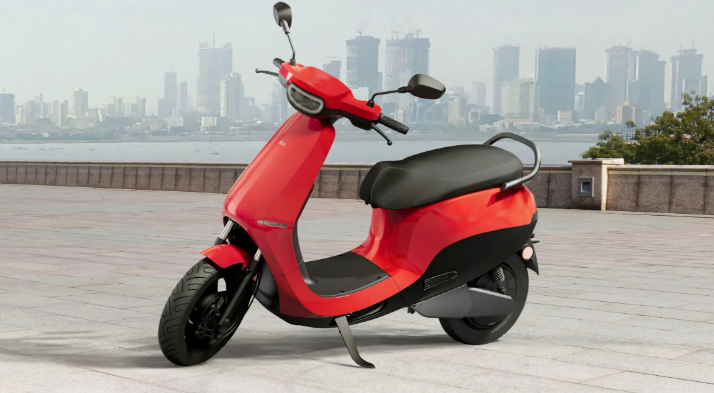
Mumbai: Ola Electric, India’s largest electric two-wheeler company, is planning to raise between USD 800 million and USD 1 billion, or 6,560-8,200 crore, through its initial public offering (IPO) primarily to fund its capital expenditure, multiple people aware of the development told ET.
The company is looking at a valuation of USD 10 billion, or 82,000 crore, they said.
The IPO is slated to hit the bourses in the last quarter of the current fiscal year. It would make Ola Electric the first Indian electric vehicle (EV) company to be listed.
If Ola Electric is able to secure the asking valuation, it would be ranked as the third most-valued two-wheeler maker in the country after Bajaj Auto and Eicher Motors. It could also be the largest IPO for this fiscal year so far.
The Bengaluru-headquartered company has roped in Goldman Sachs, ICICI Securities, Axis Capital, Citi, and Kotak Securities as lead managers for its IPO. Cyril Amarchand Mangaldas (CAM) and Shardul Amarchand Mangaldas (SAM) are the legal advisors.
The IPO is expected to be a mix of fresh issue of shares, which will form the lion’s share, and offer-of-sale by existing investors, which will account for around 10% of the share sale.
An email sent to an Ola Electric spokesperson remained unanswered till press time Thursday. Goldman Sachs, Axis Capital and Kotak Securities, too, didn’t respond to ET’s queries, while ICICI Securities’ spokesperson declined to comment.
The IPO move comes close on the heels of a USD 300-million fundraise that Ola Electric is finalising with its existing investors, led by Temasek, Singapore’s sovereign wealth fund, at a valuation of USD 6 billion.
A formal announcement of the fundraise is expected in the next 2-3 weeks, said officials in the know on condition of anonymity.
Temasek is a significant investor in Ola Cabs operator ANI Technologies and also has a small investment in the EV arm of the company.
Temasek spokesperson in an email reply said as a matter of policy, Temasek does not comment on market speculations and rumours.
In January 2022, Ola Electric had raised USD 200 million from investors including Tekne Private Ventures, Alpine Opportunity Funds, and Edelweiss, which valued the electric two-wheeler maker at over USD 5 billion.
If the latest fund raising concludes as planned, it would be the tenth round of fundraising undertaken by the company. So far, the company has raised around USD 861 million in nine rounds.
Ola Electric is the market leader in the electric two-wheelers space, having 28% share in the last three months when it sold 61,070 e-scooters, according to Vahan data.
Among legacy players, TVS Motor has been the most aggressive in the electric two-wheelers market and has cornered around 17% share. Presence of other mass market legacy two-wheeler makers such as Hero MotoCorp and Bajaj Auto is limited in the EV market.
Ola Electric has turned Ebitda positive on monthly sales from the beginning of the current fiscal year and its current monthly run-rate could lead to annualised revenue of more than USD 1 billion. In FY23, it had revenue of around USD 500 million.
The company plans to invest 2,200 crore for its two-wheeler plant, which will have installed capacity of 10 million, and another 7,600 crore on cell manufacturing as well as passenger vehicle installed capacity.
Founder and chief executive Bhavish Aggarwal told ET in an interview in March 2023 that the company is preparing for a world without incentives and subsidies, as it aggressively pursues its growth plans and scales up investment.
Ola Electric plans to set up its own lithium-ion cell manufacturing facility with an initial capacity of 5 gigawatt hour (GWh) at Krishnagiri in Tamil Nadu. This would be later increased to 20 GWh. So far, it has invested around USD 400 million on cell manufacturing capacity.
The company has allocated battery cell capacity under the PLI scheme by the government for developing advanced cells in the country. Ola Electric has announced a USD 500 million investment in battery innovation and research for the initial ramp-up. Cell manufacturing is primarily targeted to help make a cost-competitive four-wheeler EV that is slated to launch in 2024.
CLSA estimated two-wheeler retail sales to increase at a 9% CAGR between FY22 and FY31 and at 8% CAGR during FY22 to FY36.
It expects EV penetration levels to improve from 11.9% in FY22 to 14.8% in FY31 and 21.0% in FY36. The penetration rate is based on the premise that at an all-India level, vehicle ownership in FY31 will reach the levels of high-income state ownership levels in FY23 as average per capita income in FY31 is expected to reach FY22 levels in high-income states.

















